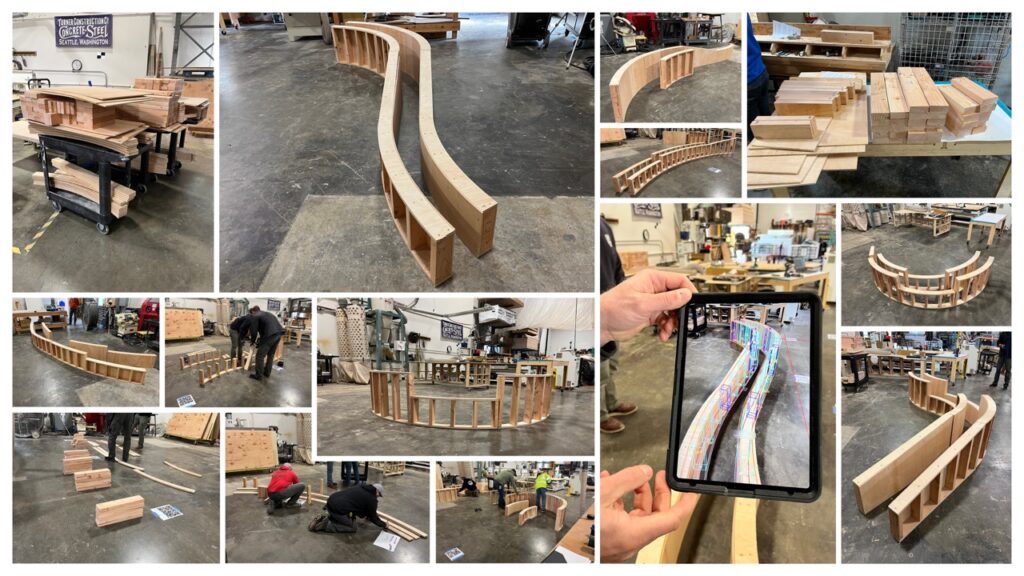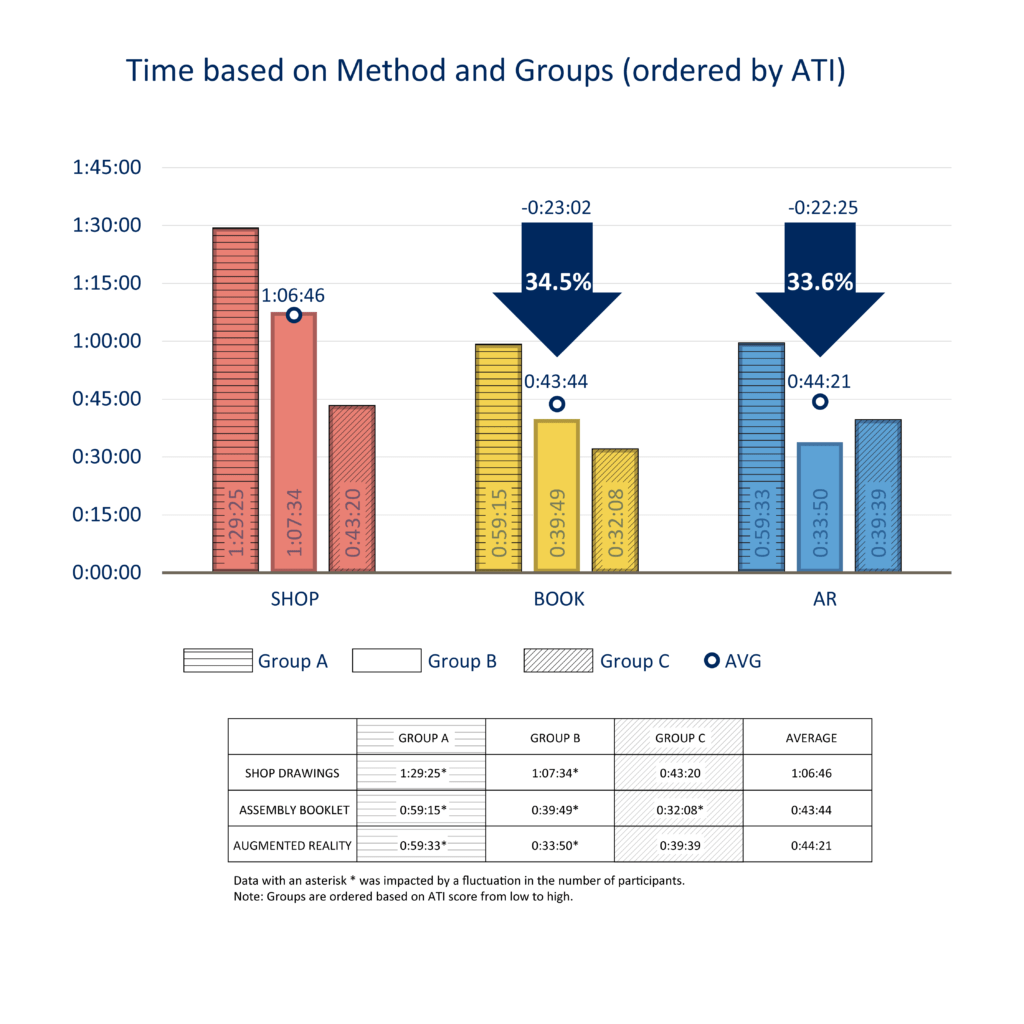August 9, 2024
Lost in Translation: Using Technology to Bridge Communication Issues from Design to Construction
ARC Fellow: Morocco M Branting
Degree Program: Master of Architecture
Faculty Advisors: Tyler Sprague (Architecture)
Firm: Turner Construction
Firm Advisors: Joshua Lohr, Sean Beatty, Nathan Brown
Project dates: Autumn 2023 – Spring 2024
Read the Project Report
Watch the Presentation
View the Presentation Slides
More about the project:
While design-to-construction workflows capitalize on CNC fabrication with Computer Aided Machining (CAM) software in conjunction with the development and implementation of Fabrication Information Modeling (FIM), a void in industry research exists around the assembly and construction phases (robotic automation excluded). Where other industries have established assembly instructions as part of their deliverables, the building industry still relies heavily on monochromatic 2-D orthographic representations as the standard baseline of communications. This research will evaluate the workflows evident in the standard practice of concrete formwork production and erection, and then apply precedent assembly workflows in other industries with iterative studies to determine effective methods for prefabricated concrete formwork assembly.
In collaboration with Turner Construction’s Virtual Design and Construction department in Seattle, Washington, the goals of this study are to 1) improve communication and understanding across major parties in the building process; 2) harness parametric and automated workflows to streamline information flows between parties; and 3) boost productivity by reducing errors and re-work and by reducing on-site assembly and erection time through assembly instructions utilizing a clear graphic language. Turner Construction’s existing innovations in parametric formwork generation and automated workflows using Grasshopper will also be analyzed as a primary source of research, development, and application in built projects.

These images, captured during the assembly trials, show how teams worked with the different communication methods tested in this project to construct three different sets of CNC-produced concrete formwork units. MOROCCO M BRANTING

One of the most significant and interesting observations from the assembly trial dataset was the difference in average completion time for each type of assembly instruction. Both alternative practices showed reductions in excess of 33%, indicating the value in continued efforts to research alternative practices in construction. MOROCCO M BRANTING

At the time of this research (2024), the assembly booklet approach to communication emerged as the most effective method. While augmented reality was effective, technological limitations and general unfamiliarity resulted in this approach lagging behind the assembly booklet. MOROCCO M BRANTING
